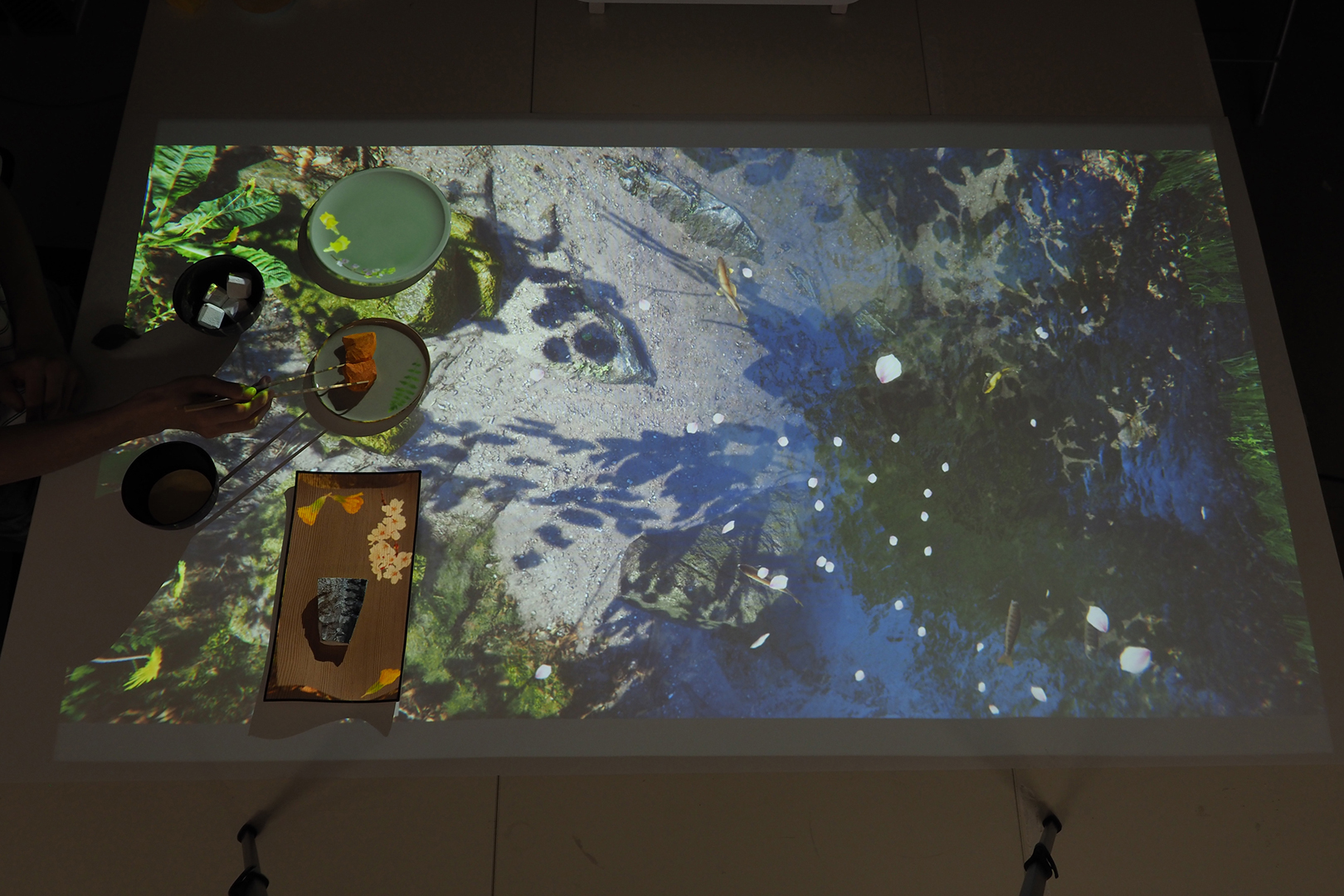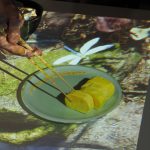Kei Kobayashi, Kazuma Nagata, Junichi Hoshino: Augmented Reality Media to Express the Experience of Japanese Food Culture
Notice: Pod Template PHP code has been deprecated, please use WP Templates instead of embedding PHP. has been deprecated since Pods version 2.3 with no alternative available. in /data/siggraph/websites/history/wp-content/plugins/pods/includes/general.php on line 518
Artist(s):
Title:
- Augmented Reality Media to Express the Experience of Japanese Food Culture
Exhibition:
- SIGGRAPH Asia 2020: Untitled & Untied
-
More artworks from SIGGRAPH Asia 2020:
Notice: Array to string conversion in /data/siggraph/websites/history/wp-content/plugins/siggraph-archive-plugin/src/next_previous/source.php on line 345

Notice: Array to string conversion in /data/siggraph/websites/history/wp-content/plugins/siggraph-archive-plugin/src/next_previous/source.php on line 345

Category:
Artist Statement:
Summary
By combining interaction and visual expression with food, this work supplies changing image mapping content as users eat, expressing nature and the seasons which support Japanese cuisine, as well as the traditions which influence it.
Abstract
Japanese food was registered as a UNESCO intangible cultural heritage in 2013, praised as an embodiment of Japanese people’s respect for nature and social customs. However, actual meals are limited to ingredients, tableware, and plating information, so thoroughly understanding the distinctive features of Japanese food is difficult. To express Japanese food culture, this piece combines interaction with video expression and actual meals. As users eat, a projector is used for mapping images to the table to depict changes in the natural environment and the garnishes of the four seasons, creating a system that builds understanding of tradition. Garnishes refers to vegetables and flowers used as an accent to improve the appearance of dishes. The Japanese foods presented are one soup and three side dishes. One soup and three side dishes are said to be the foundation of Japanese cuisine, with meals often consisting of a staple food, soup, two side dishes, and a main dish. Their arrangement on the table is also predetermined. A few users were allowed to try out the system, and the concept of Japanese cuisine being supported by nature and seasons and affected by traditions was expressed to these users. In addition, by seeing the act of eating in a new light, users were able to reconfirm aspects of Japanese cuisine such as gratitude for the blessings of the natural world. At the art gallery, models are used to perform demonstrations.
Technical Information:
The system consists of a PC, short-focus projector, and RGB-D camera. Infrared imaging from the camera was used for recognition of the tableware. Since the infrared imaging does not detect the projector’s image mapping, it enables the camera to capture only the tableware and food. This imaging was used to extract the contours of the tableware, and the size was used to judge the type, ensuring the proper garnish was projected onto each. The amount of food was recognized by measuring area on the color image, and image mapping was changed when the remaining area decreased. For this reason, the color of the tableware was set using HSV values, and the measurement of colors other than the interior color of each piece (the food) was used to determine this area. However, to determine timing for mapping garnishes to the tableware, images of the seasonal garnishes to be used were measured, and the area of the garnish was subtracted from the area which differed from the color of the interior of the tableware.
Process Information:
The artist has produced works related to the traditions of intangible culture up until now. Traditional culture includes its own unique values, and learning about them is important for enabling people from different nations and races to recognize cultural differences, build relationships of equality, and co-exist with one another. Technology has the role of expanding cultural experiences in the process of creating works. Focusing on behavior within cultures, works use cameras and sensors to detect behaviors and the changes they cause, applying them to creating interaction, enabling users to experience and take an interest in traditional culture. For example, this piece uses eating Japanese cuisine to achieve interaction, and as the meal progresses, projection mapping produces changes in the table and tableware. However, when introducing technology to traditional culture, attention must be paid to ensure the original cultural experience isn’t inhibited and anyone can participate and easily understand. Traditional culture should be respected, with technology used as a means to an end. In the case of this work, Japanese cuisine is a cultural heritage which is both praised and respected, and no changes were made to the utensils or food themselves in the process of adding interaction. The food quantity was monitored using the image from the camera. Partial projection mapping was used solely for the expression of seasonal garnishes, enabling the appeal of ceramic and wooden tableware to stand on its own. As for the ease of understanding the experience, since the images projected onto the tableware and the table itself change as the meal progresses, there is no need for any special gesture to produce these changes, and users can experience augmented culture by simply eating the food at their own pace.








